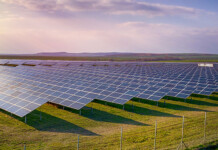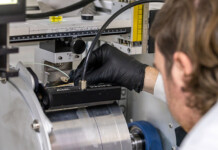The federal government has published its 2024 National Hydrogen Strategy, aimed at positioning Australia as a global leader in the production and export of green hydrogen.
Backed by $8 billion in funds from this year’s federal budget, the plan forecasts Australia to produce at least 0.5 million tonnes of green hydrogen per year by 2030, and at least 15 millions tonnes a year by 2050.
Related article: Australia and Germany sign joint declaration on hydrogen
Speaking at the APAC Hydrogen 2024 Summit & Exhibition in Brisbane, Minister for Climate Change and Energy Chris Bowen said the blueprint paved the way for Australia to develop new domestic clean energy manufacturing capabilities and capitalise on massive export opportunities for clean, secure energy supply chains through becoming a hydrogen world leader.
“This strategy sets a vision for Australia as a global leader with its clean, innovative, safe and competitive hydrogen industry,” Minister Bowen said.
“As our industry scales, it will provide further and greater benefit for communities, support broader economic growth and provide a key lever for Australia to reach net zero.
“It sends a clear signal to trading partners about the future marketplace in Australia for hydrogen and hydrogen-based fuels. We’re already seeing the benefits of this through expanded trading agreements with key partners such as Germany.
“Having this blueprint also informs future infrastructure planning and investments across all Australia’s governments, and outlines how Australia can take advantage of the global transition to net zero, by underpinning new domestic manufacturing such as green metals and chemicals, as well as energy exports to our international partners.”
The 2024 National Hydrogen Strategy identifies four objectives, supported by 34 actions and associated enablers to underpin delivery of Australia’s hydrogen industry at scale.
Central to this delivery is the green Hydrogen Production Tax Incentive program, and the expanded green Hydrogen Headstart program, which the Albanese Government is funding through an estimated $8 billion allocation made in this year’s Federal Budget as part of a Future Made in Australia.
Related article: New catalyst could advance green hydrogen production
Both programs have been designed with industry to most effectively drive economies of scale, accelerate investment, reduce the cost gap and help major projects reach financial close faster.
They are expected to unlock $50 billion in private sector investment and see Australia’s annual domestic production capacity exceed 1 million tonnes of green hydrogen by 2030.







